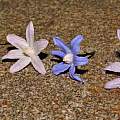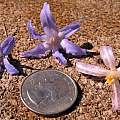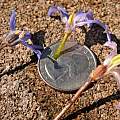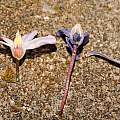Here is a simple key highlighting the differences between Scilla and its close relatives Chionodoxa (widely accepted as part of Scilla sensu lato as Scilla sect. Chionodoxa), and Puschkinia. No matter what they are called, the species can be difficult to tell apart. This simple guide may be useful in this regard. This was not so much created for taxonomic purposes, but rather for the gardener who wishes to be able to determine what they are growing easier.
1a. Filaments are round - Scilla sensu stricto (Scilla in the strict sense)
1b. Filaments are flattened - see "2"
† Chionodoxa "Forbesii" group contains at least Chionodoxa forbesii, C. sardensis, C. lochiae, and C. siehei (recently considered a form of C. forbesii). This group often has many small flowers with spherical or pyramidal unfused coronas formed by the flattened filaments of mostly equal lengths.
‡ Chionodoxa "Luciliae" group contains at least Chionodoxa luciliae and C. nana. This group often has fewer large flowers and cylindrical to slightly pyramidal unfused coronas formed by the flattened filaments, often of visibly different lengths. The anthers themselves are of equal length, and they are all attached to the apex of the filament (which differ in length) giving the impression that they too differ in length. See the photos below:



